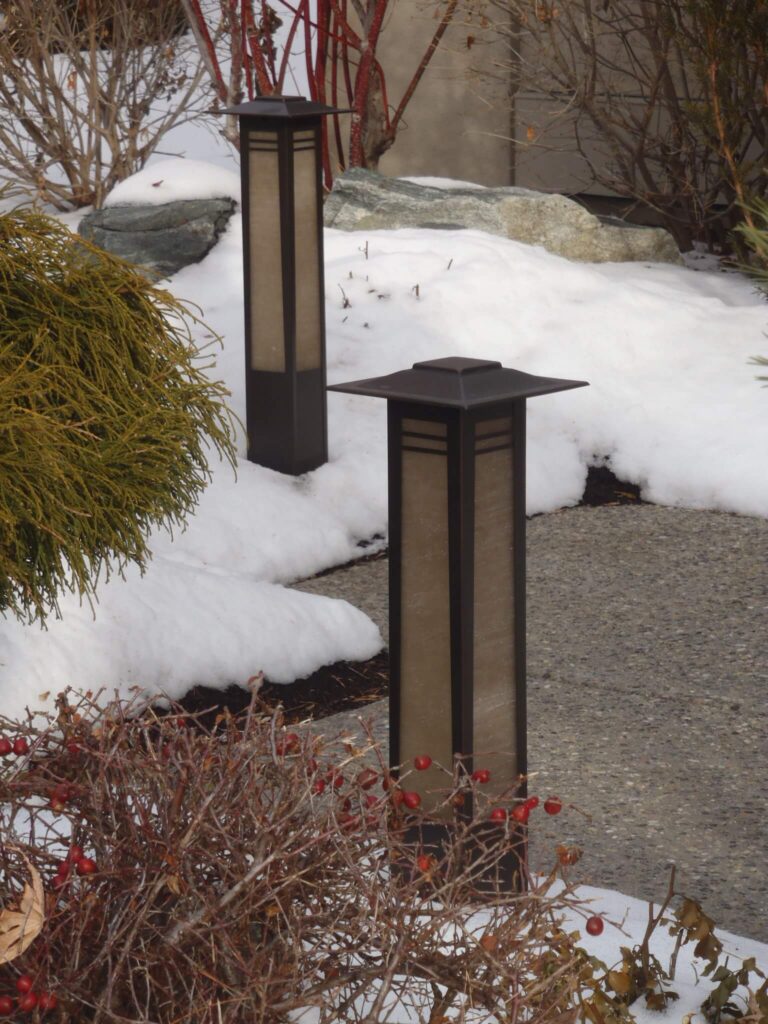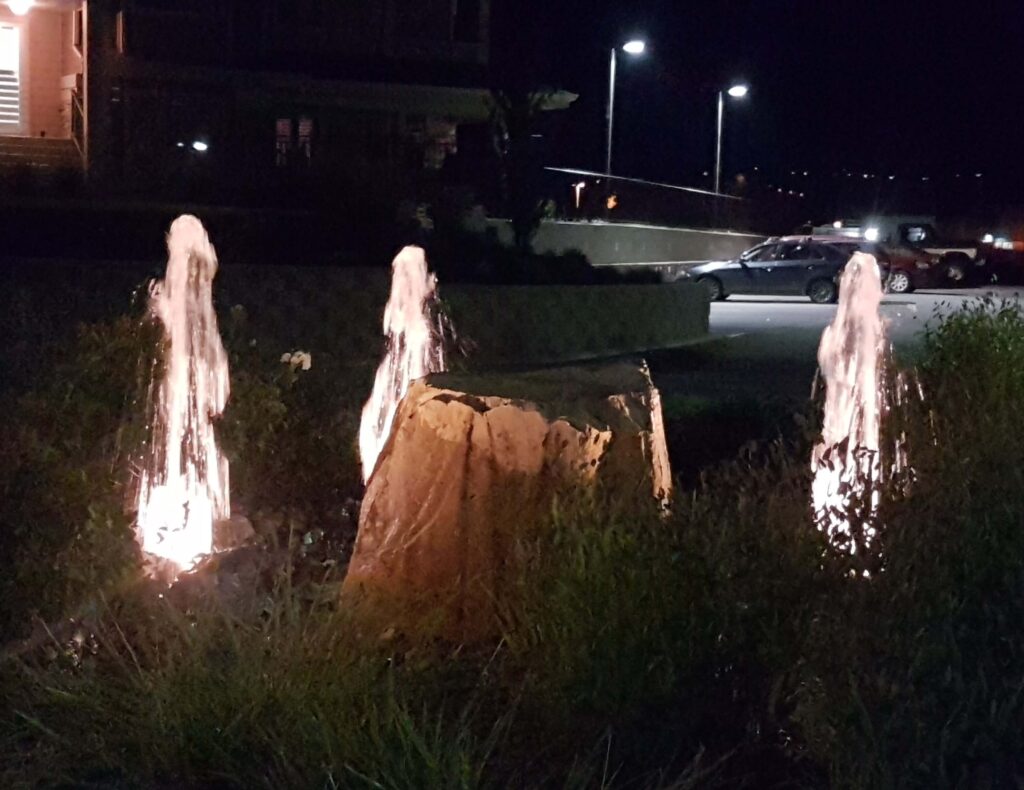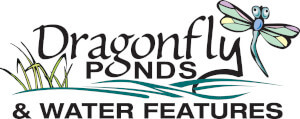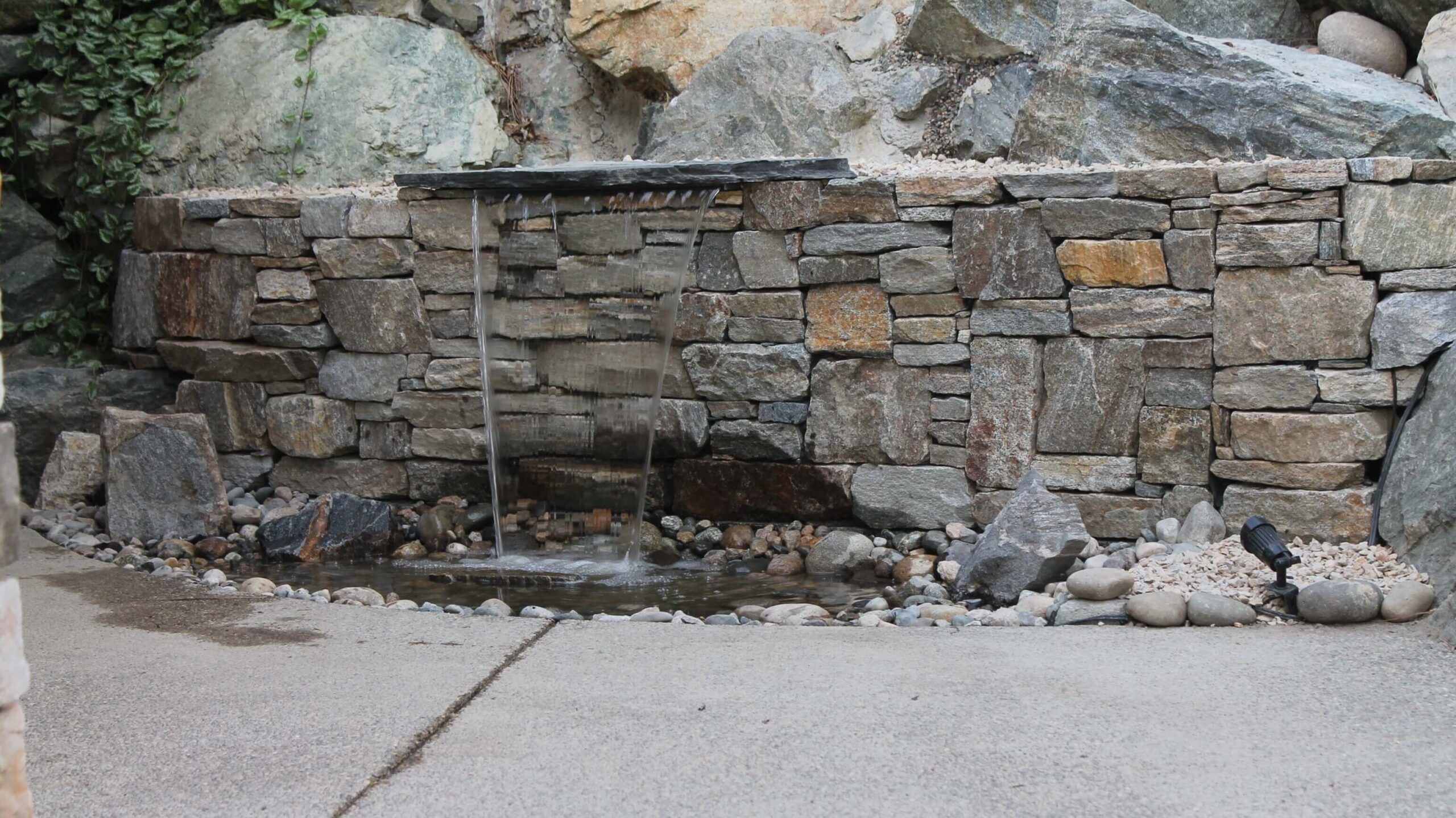
Lighting around the yard at night adds an amazing new element to your landscaping, creating a warm inviting feeling for you and your guests alike.
Illuminating your landscape allows you and your guests to enjoy decks, seating areas and recreational areas beyond daylight hours. A good game of bocce or croquet at night is magical. Lighting up a water feature, pathways, rocks, a trellis, sign post, sculpture, fence panels, uncle bob’s artwork, that amazing Curly Willow or showcasing plants and trees, you get to see your landscape in a completely different way in the dark.
Seasonal Lighting
Adding seasonal enjoyment is a real benefit as well. During the short days and grey skies of Winter, it is nice to look out and see snow covered branches lit up with light and the path lights making bright white circles along the pathways. It definitely adds a welcoming cheerfulness when looking out at your winter wonderland.
Fall provides the interest of the changing colours of the foliage and character of the stems and branches that start to show as the leaves drop.
Spring also showcases the plant and tree infrastructure but also the new growth starting to sprout and casting beautiful shadows.
Functional Lighting
Lighting also has a functional role as well by providing light to make it safer around dark areas, showing where the pathways are and even added security. Deck and stair lighting are also available to make these areas safe at night.
Landscape lighting has been revolutionized in recent years with the introduction of high quality LED technology that consumes a fraction of the power. You no longer require the costly high powered transformers, bulbs that you can burn yourself on, always replacing bulbs, expensive wire and high operating costs.
Here are some examples of the differences in wattage:
- A 2.5 watt LED is the equivalent to a 16-24 watt Halogen Bulb
- A 3.5 watt LED is the equivalent to a 40 watt Halogen Bulb
- A 7.5 watt LED is the equivalent to a 90 watt Halogen Bulb

The best part is there is no noticeable difference in the Lumens (light intensity) between good LED lights and halogens. Unfortunately, a lot of people see the blue coloured light generated by solar LED lights and cheaper spot/path lights and assume that is the LED. That is the low end of LED technology and utilizes a low cost LED bulb. A high quality LED light comes with a built in LED bulb and comes with a 15 year warranty.
LED lights have a higher start up cost as the lights cost more, but the hardware and operating costs are much less. The best part of LED lights is once they are installed you don’t have to do anything, you will never replace a bulb again.
Path lights are great as they are downward lighting and you do not see the light source. If you have a dark sidewalk, need some safety lighting for an awkward spot or want to show off a whimsical pathway, path lights will not disappoint. We even use path lights to light up stems and small waterfalls so that you do not see a concentrated beam of light and the stream ripples dance beautifully.
Spot lights are great to showcase a waterfall, trees and unique bushes. They come in many different styles and wattages so there is something available for any upward lighting application.
In water features, lights are available for both in water and out of water depending on the look you are going for. I do prefer and recommend water feature lighting outside of the pond as unless you use high quality lights, in pond lighting can be problematic. I also found that underwater light produces a “ball of light” in the pond as light can’t pass through water as well. If you have fish, underwater lights can help the predators out as well. Spot and path lights can both be used in water features and sometimes one can be better than the other when it comes to showing off the “dancing water”.
There are many techniques in landscape lighting including: up lighting, front lighting, grazing, silhouette, wall washing, shadowing, moon lighting, path lighting, step lighting and deck lighting.

